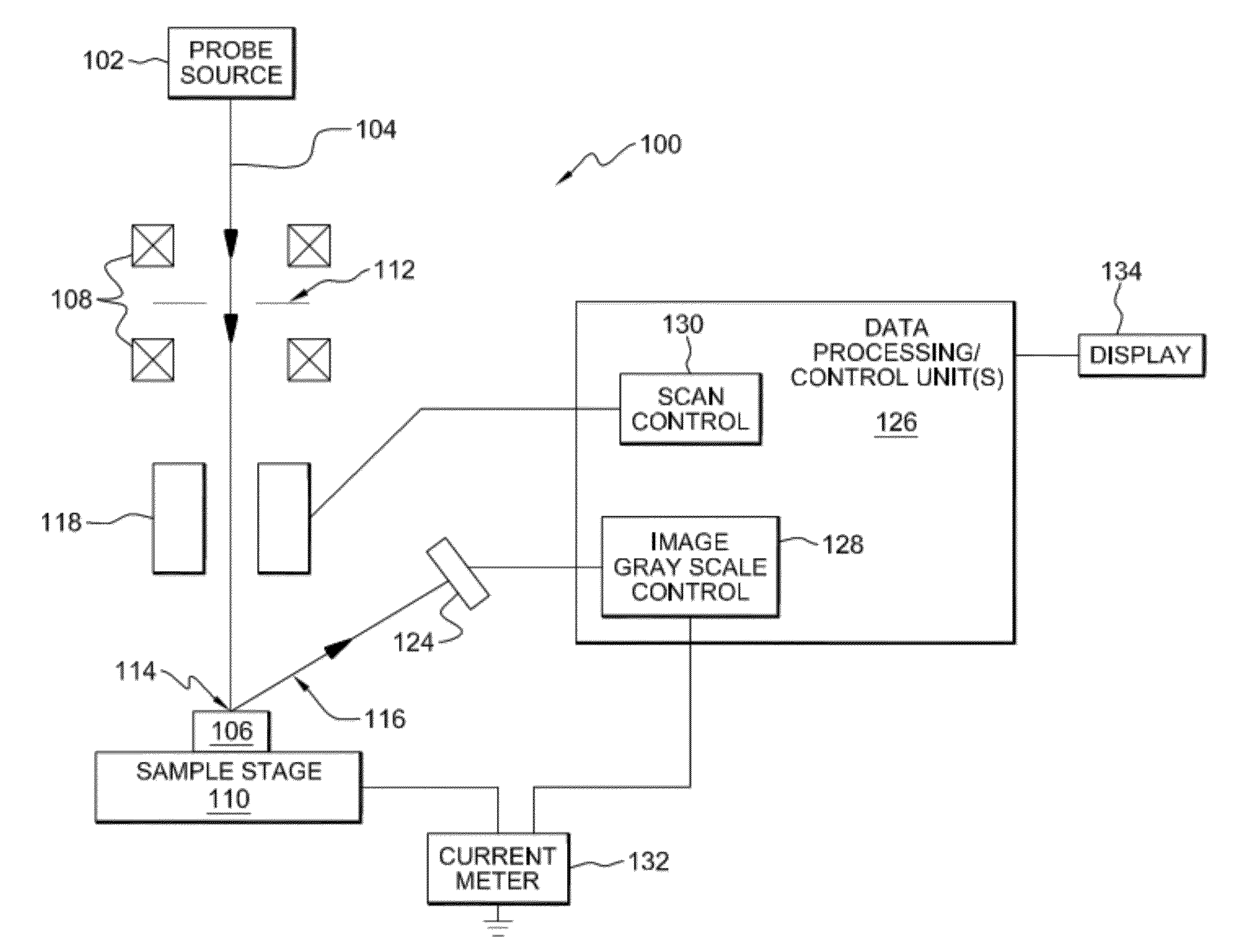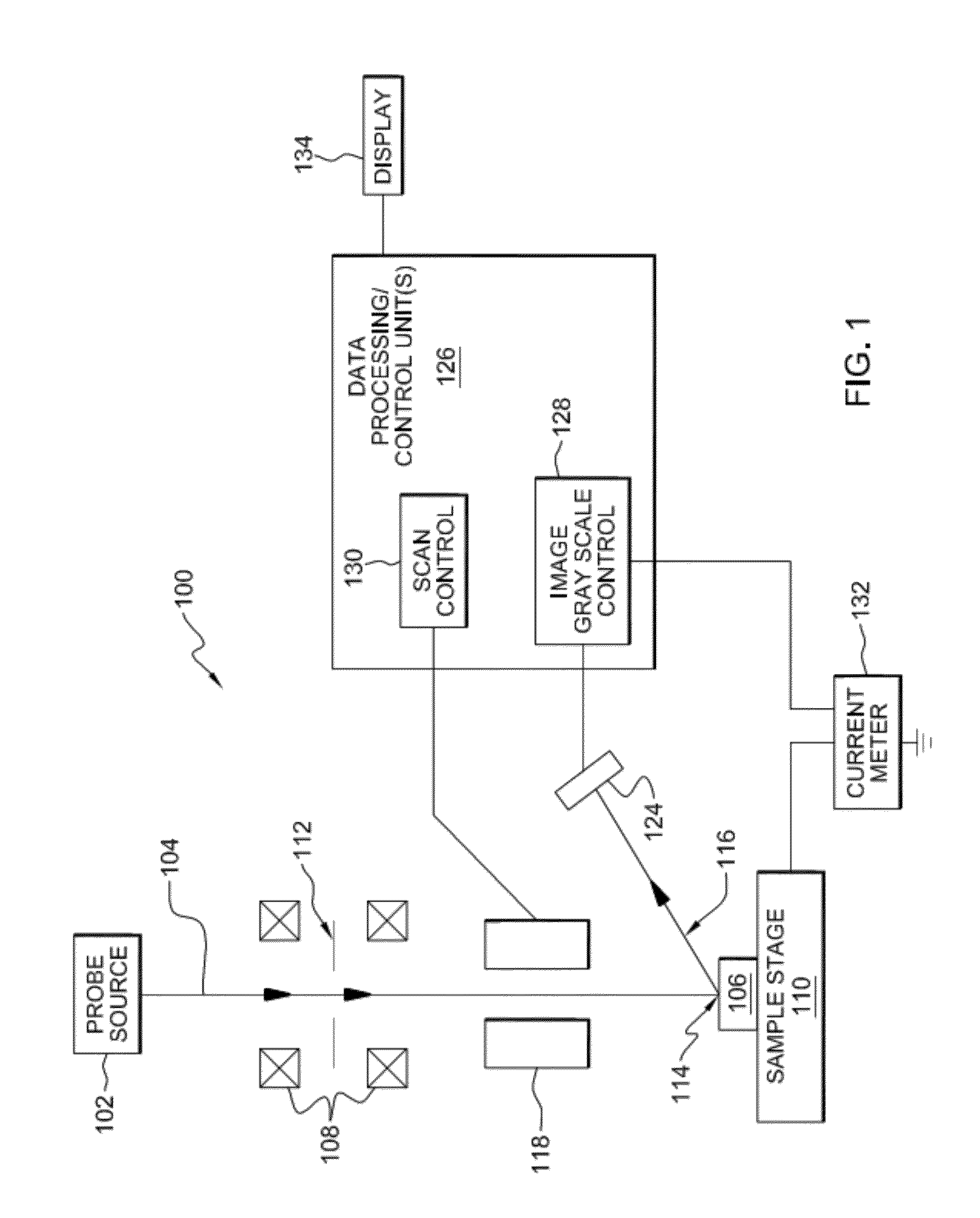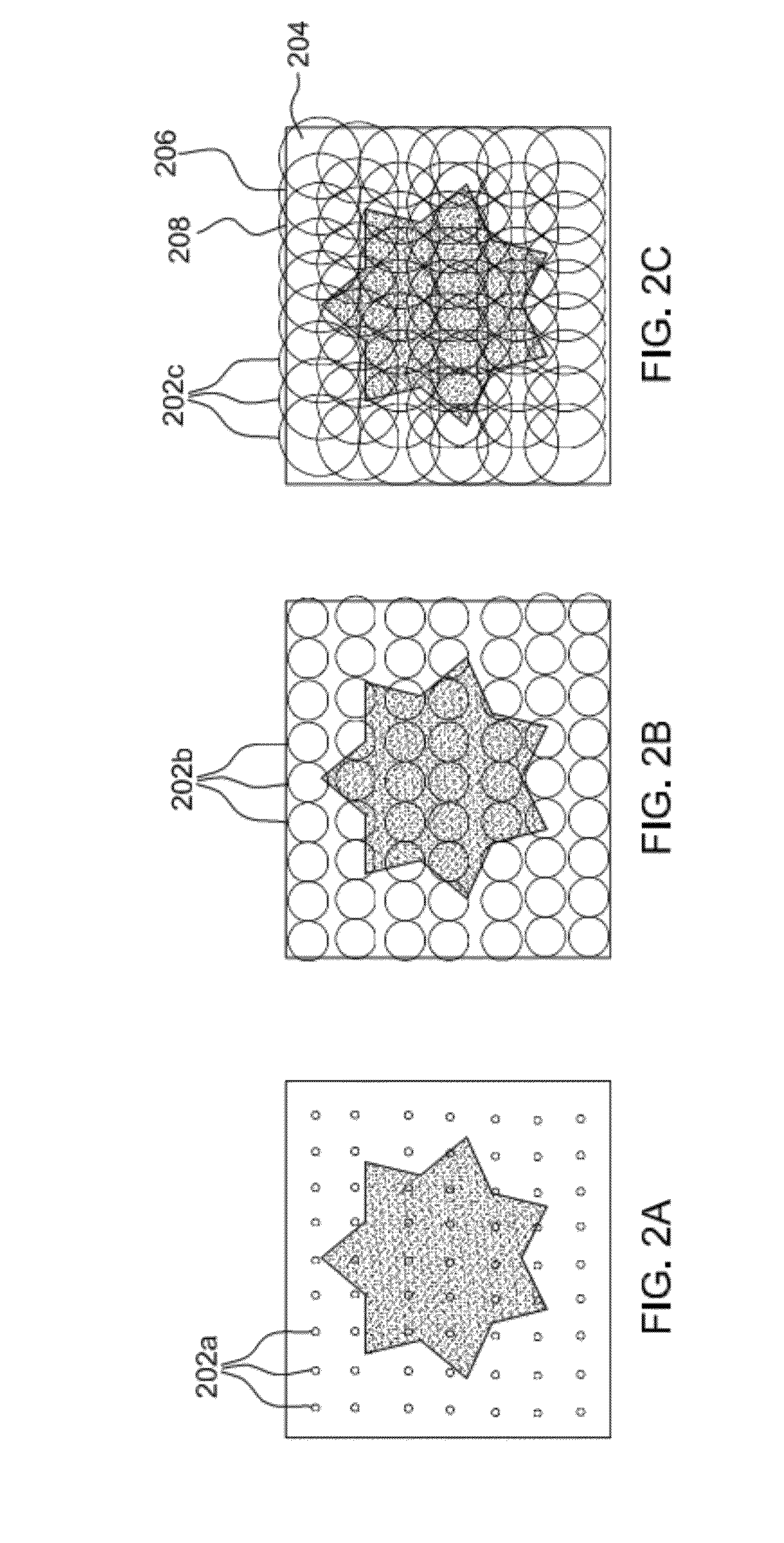Scanning incremental focus microscopy
a microscopy and incremental focus technology, applied in the field of objects imaging, can solve the problems of increasing the cost of microscopes with extremely small probe sizes, limiting the ability to obtain high resolution images of discernable features, and increasing the cost of reducing the probe siz
- Summary
- Abstract
- Description
- Claims
- Application Information
AI Technical Summary
Benefits of technology
Problems solved by technology
Method used
Image
Examples
Embodiment Construction
[0016]Aspects of the present invention can be used in conjunction with various imaging techniques, including sequential imaging techniques. Sequential imaging involves scanning a probe across a sample object, typically in a series of lines called a raster. At the same time, a signal related to the intensity of an emission (an ‘emission intensity’) generated by the probe, or the reflected intensity of the probe itself, striking various points of the sample object, may be displayed on a synchronously scanned display.
[0017]One example of a sequential imaging technique with which the present invention may be employed is scanning electron microscopy (SEM), where the probing signal is an electron beam and the generated signal typically (though not always) consists of secondary electrons. In SEM, electrons are directed from a source towards a sample. Sources can include a tungsten filament, a lanthanum hexaboride filament, a cold field emitter, or a Schottky emitter, to name a few. In SEM,...
PUM
 Login to View More
Login to View More Abstract
Description
Claims
Application Information
 Login to View More
Login to View More - R&D
- Intellectual Property
- Life Sciences
- Materials
- Tech Scout
- Unparalleled Data Quality
- Higher Quality Content
- 60% Fewer Hallucinations
Browse by: Latest US Patents, China's latest patents, Technical Efficacy Thesaurus, Application Domain, Technology Topic, Popular Technical Reports.
© 2025 PatSnap. All rights reserved.Legal|Privacy policy|Modern Slavery Act Transparency Statement|Sitemap|About US| Contact US: help@patsnap.com



